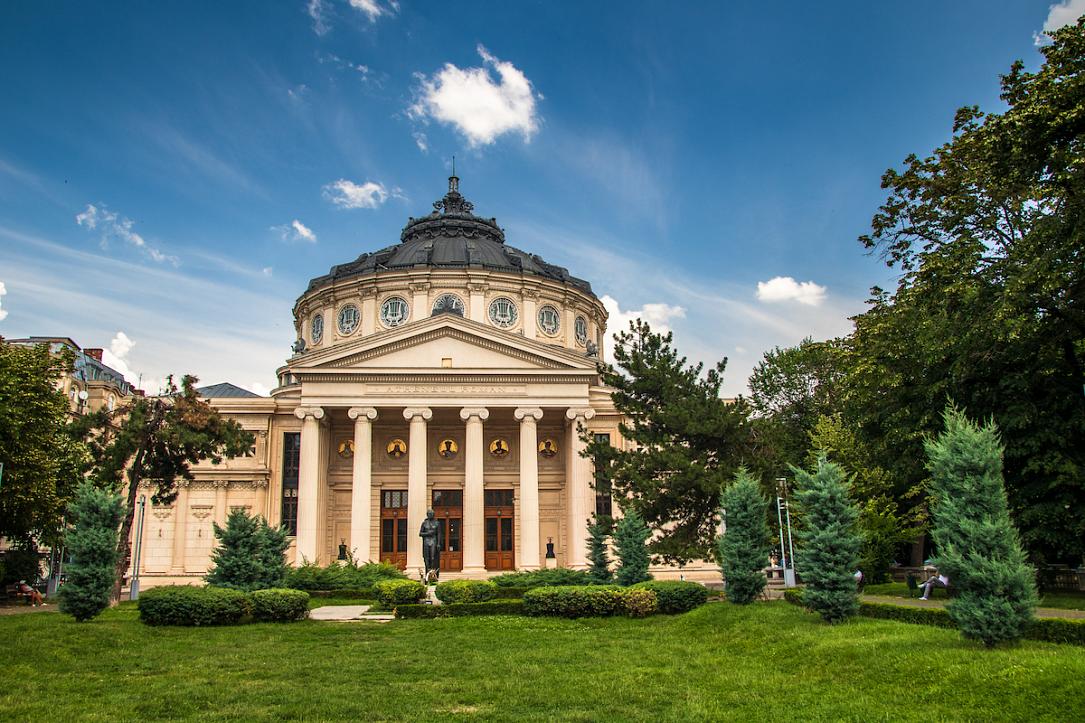History special: Albert Galleron, the French architect of the Romanian Athenaeum



The future great architect Albert Galleron was born in 1846 in Paris and began his studies at the Ecole des Beaux-Arts in 1867, at the age of 21, with Vaudoyer and Coquart as professors. He changed his residence several times, living in France and Spain. But he also lived in Romania for several years, bringing a valuable contribution to the local architecture.
In Romania, Galleron is mainly remembered today as the man that designed the Athenaeum - the sophisticated building in downtown Bucharest that has become a symbol of the national culture. Located in the busy area of George Enescu Square and Calea Victoriei, it’s the kind of building that you just can’t miss. With its large dome and imposing columns, the building resembles an ancient Greek temple. And the interior is even more spectacular.
The Romanian Athenaeum’s construction started in 1886 and was completed about two years later, in February 1888. Work continued later on, however, until 1897. Today, the neoclassical, circular building is home to the local George Enescu Philharmonic Orchestra and the place to go for classical music fans.
The project was partially funded with money raised via a public subscription with a simple yet catchy slogan: Dati un leu pentru Ateneu (Give a penny for the Athenaeum). And this idea of calling for people’s help, which started from Constantin Esarcu (the founder of the Romanian Athenaeum Society), proved to be a true lesson of unity. A similar initiative was carried out in the country many years later, in 2016, when the Romanian government launched a public fundraising campaign to gather money to buy the famous Cumintenia Pamantului (Wisdom of the Earth) sculpture by Constantin Brancusi. Unfortunately, history did not repeat itself this time, and this campaign was not successful.
But Albert Galleron has also signed another imposing building of the Romanian capital - the Old Palace of the National Bank of Romania. Erected on the former site of the inn built by Serban Cantacuzino, the project was designed by Galleron and Cassien Bernard. Its construction started in July 1884, in the late-19th century eclectic style with neoclassical elements.
Today, the Palace located in the lively Old Town is one of Bucharest’s most sophisticated and imposing historical and art monuments. According to Bnr.ro, architect Ion Mincu considered it “the most beautiful building in Bucharest."
The French architect’s work in Bucharest also included smaller projects (in size but not architectural value). Most were private mansions, such as the house of doctor Turnescu in Dionisie Lupu street (built between 1893 and 1895), the Eliza Filipescu House (built in 1884 together with Paul Gottereau), the Costescu Comaneanu house (1889), or the Iacob Negruzzi House (1889).
But Albert Galleron also left his mark outside of the capital, signing several stylish buildings across Romania. Among them, the Ghika-Comanesti Palace in Bacau county and the Geblescu mansion in Craiova.
After 1900, Albert Galleron continued his work as an architect in France and Spain. He died in Paris in 1930.
Sources: Article about Paul Louis Albert Galeron on Wikipedia; E-architecture.ro; “Albert Galleron - arhitectul Ateneului” article on Zf.ro; Fge.org.ro; Bnr.ro
newsroom@romania-insider.com
(Opening photo: the Romanian Athenaeum; photo by Milan Maksovic/Dreamstime.com)